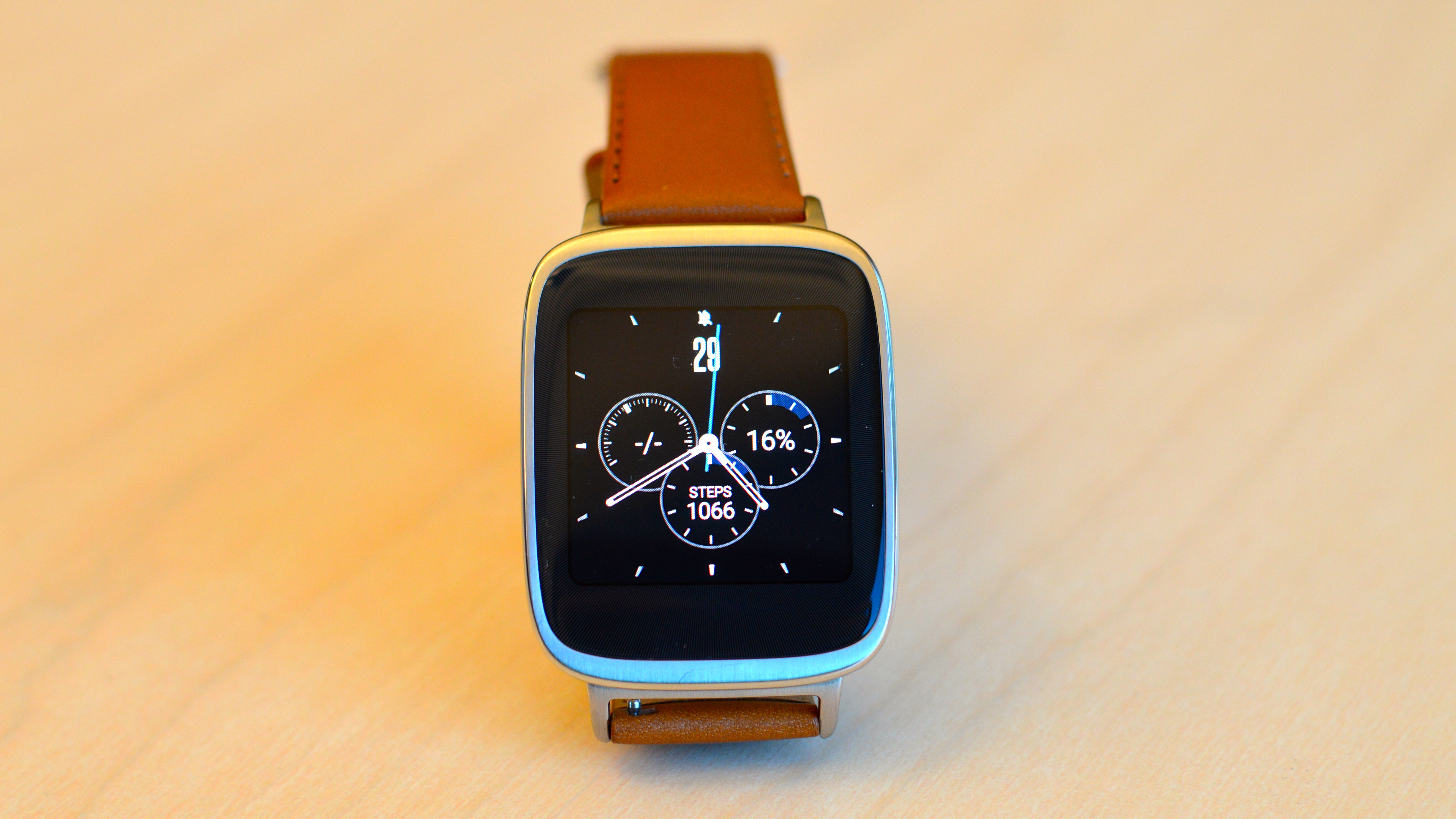Why you can trust TechRadar
A Qualcomm processor, the APQ8026, otherwise known as the Snapdragon 400, lies at the heart of Asus ZenWatch. It's a surprisingly powerful dual-core chip, clocked at up to 1.7GHz, although I suspect it is significantly downclocked.
The rest of the spec sheet is not too shabby as well, with 512MB of RAM and 4GB on-board storage, we're looking at the same base components we'd see in an entry-level tablet. But of course, squeezed into a product a fraction of its volume.
As for that gorgeous, curved rectangular AMOLED, its 320 x 320-pixel panel is not quite as sharp as the Samsung Gear S's360 x 480 resolution (albeit on a much bigger display).
The rest of the spec sheet includes Bluetooth, a 369mAh battery, 9-axis sensors, plus the heart rate monitor and IP55 water resistant capabilities.
Interface and performance
First things first: the Asus ZenWatch runs Android Wear, and that comes with its own fair share of trials and tribulations. We've gone over the pros and cons of Android Wear ad nauseum in other smartwatch reviews, but the basic idea is, if you've used one Android Wear smartwatch, you've used them all.
You don't get an especially unique interface experience from the Moto 360 or LG G Watch R - though it is different from the Gear S's Tizen OS.

Your basic information cards pop up from vertically from the bottom of the screen to flick through the available cards, a swipe from left to right will remove a card from the list while moving your finger in the opposite direction will take you to more options. Tapping the home watch face screen will take you to the apps where you can choose to look at settings, heart rate, steps, agenda, alarms and more. Your most recent app will be at the top of a scrolling list.
Sign up for breaking news, reviews, opinion, top tech deals, and more.
Still, the voice-recognition works surprisingly well, especially in louder environments and music controls are useful too if you don't want to take your phone out of your pocket.
Notifications are handy, if somewhat limited. You can answer with templates (yes, no, I'm busy and that sort of thing). But realistically, if you want to reply, you're getting your phone out.
Current page: Specs, interface and performance
Prev Page Design and comfort Next Page Apps and fitness
Cameron is a writer at The Verge, focused on reviews, deals coverage, and news. He wrote for magazines and websites such as The Verge, TechRadar, Practical Photoshop, Polygon, Eater and Al Bawaba.
